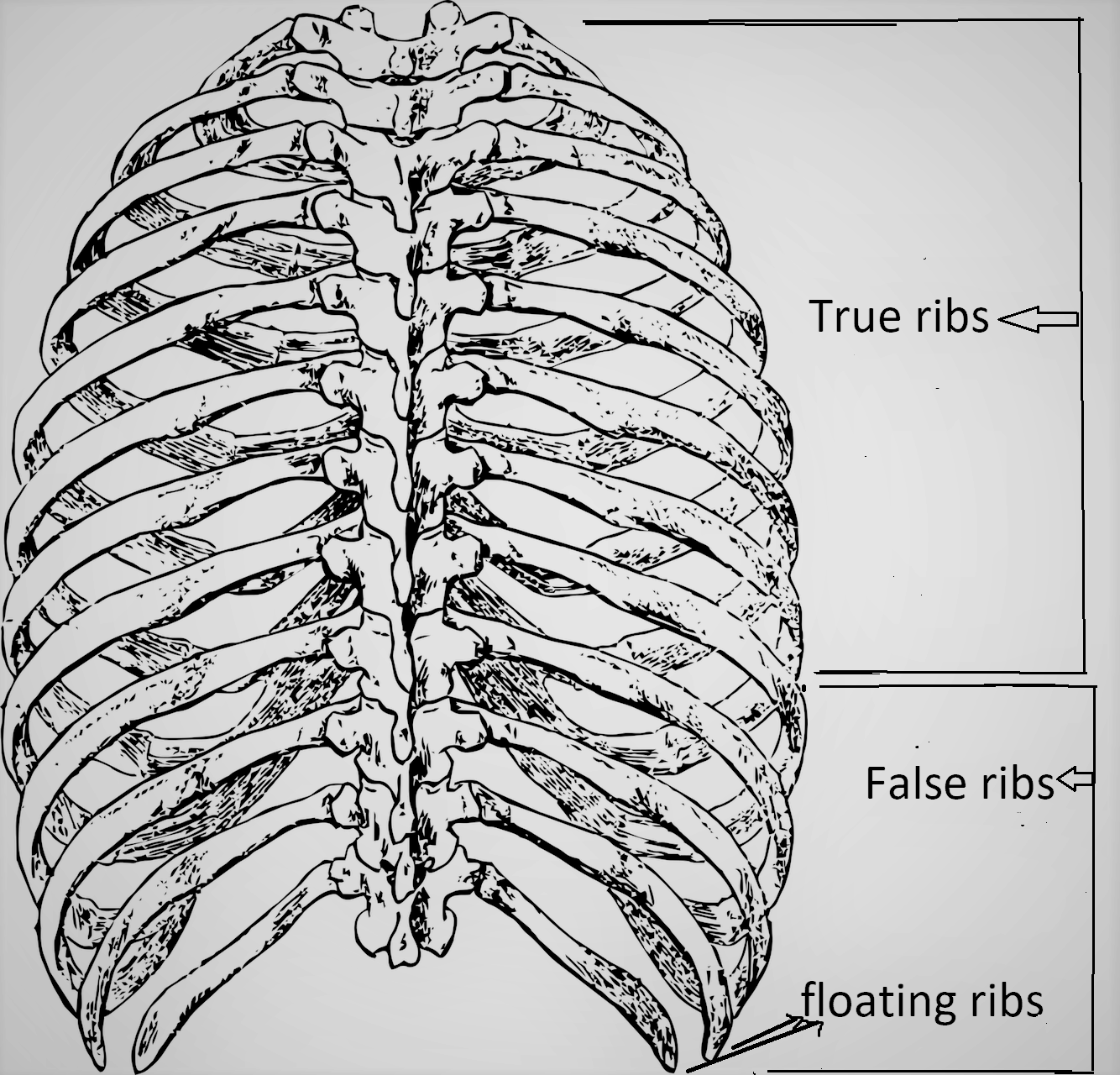
7 pairs of true ribs are present in the
(a)Rabbit
(b)Man
(c)Both of the above
(d)None of the above
Answer
499.2k+ views
Hint: The rib cage protects the internal organs of the chest and supports the chest wall preventing it from collapsing. The first seven pairs of ribs are known as true ribs and are found in vertebrates.
Complete step-by-step answer:
Mammals like humans have 12 pairs of ribs. The first 7 are attached ventrally to the sternum by cartilage, the next 3 are attached indirectly by cartilage to the sternum, and the last 2, the floating ribs, have no attachments to the sternum or cartilage coming off the sternum. Their number is the same in both men and rabbits.
Additional Information: -The first rib is unique and easy to distinguish, it is a short, flat, C-shaped bone. The attachment can be found below the neck at the first thoracic vertebra.
- Second, to seventh, these ribs appear to be longer and less curved as they progress downwards.
-The last five pairs are known as false ribs.
-The shape of rib- human ribs increase in length from ribs 1 to 7 and then decrease. With this change in size, the ribs become slanted from ribs 1 to 9 and then less slanted when it comes to the end.
- In fish- there are usually two pairs of ribs attached to the vertebral column. One pair, the dorsal ribs, are found between the upper and lower parts of the main muscle segments. The second set, the ventral ribs, arise from the vertebral column and enclose the lower body, often joining at the tips.
-Not all species possess both types of rib, for example, sharks have no dorsal ribs, and only very short ventral ribs, sometimes there are no ribs present like in lampreys (lamprey eels).
So, the correct answer is ‘both of the above’.

Note: he sternum (or breastbone) is a flat, long, bony plate located at the anterior aspect of the thorax and is made of the manubrium, the gladiolus, and the xiphoid. It has a 'T' shape and lies in the midline of the chest.
Complete step-by-step answer:
Mammals like humans have 12 pairs of ribs. The first 7 are attached ventrally to the sternum by cartilage, the next 3 are attached indirectly by cartilage to the sternum, and the last 2, the floating ribs, have no attachments to the sternum or cartilage coming off the sternum. Their number is the same in both men and rabbits.
Additional Information: -The first rib is unique and easy to distinguish, it is a short, flat, C-shaped bone. The attachment can be found below the neck at the first thoracic vertebra.
- Second, to seventh, these ribs appear to be longer and less curved as they progress downwards.
-The last five pairs are known as false ribs.
-The shape of rib- human ribs increase in length from ribs 1 to 7 and then decrease. With this change in size, the ribs become slanted from ribs 1 to 9 and then less slanted when it comes to the end.
- In fish- there are usually two pairs of ribs attached to the vertebral column. One pair, the dorsal ribs, are found between the upper and lower parts of the main muscle segments. The second set, the ventral ribs, arise from the vertebral column and enclose the lower body, often joining at the tips.
-Not all species possess both types of rib, for example, sharks have no dorsal ribs, and only very short ventral ribs, sometimes there are no ribs present like in lampreys (lamprey eels).
So, the correct answer is ‘both of the above’.

Note: he sternum (or breastbone) is a flat, long, bony plate located at the anterior aspect of the thorax and is made of the manubrium, the gladiolus, and the xiphoid. It has a 'T' shape and lies in the midline of the chest.
Recently Updated Pages
Master Class 11 Business Studies: Engaging Questions & Answers for Success

Master Class 11 Accountancy: Engaging Questions & Answers for Success

Master Class 11 Computer Science: Engaging Questions & Answers for Success

Master Class 11 English: Engaging Questions & Answers for Success

Master Class 11 Social Science: Engaging Questions & Answers for Success

Master Class 11 Economics: Engaging Questions & Answers for Success

Trending doubts
Which one is a true fish A Jellyfish B Starfish C Dogfish class 11 biology CBSE

State and prove Bernoullis theorem class 11 physics CBSE

1 ton equals to A 100 kg B 1000 kg C 10 kg D 10000 class 11 physics CBSE

In which part of the body the blood is purified oxygenation class 11 biology CBSE

One Metric ton is equal to kg A 10000 B 1000 C 100 class 11 physics CBSE

Difference Between Prokaryotic Cells and Eukaryotic Cells




